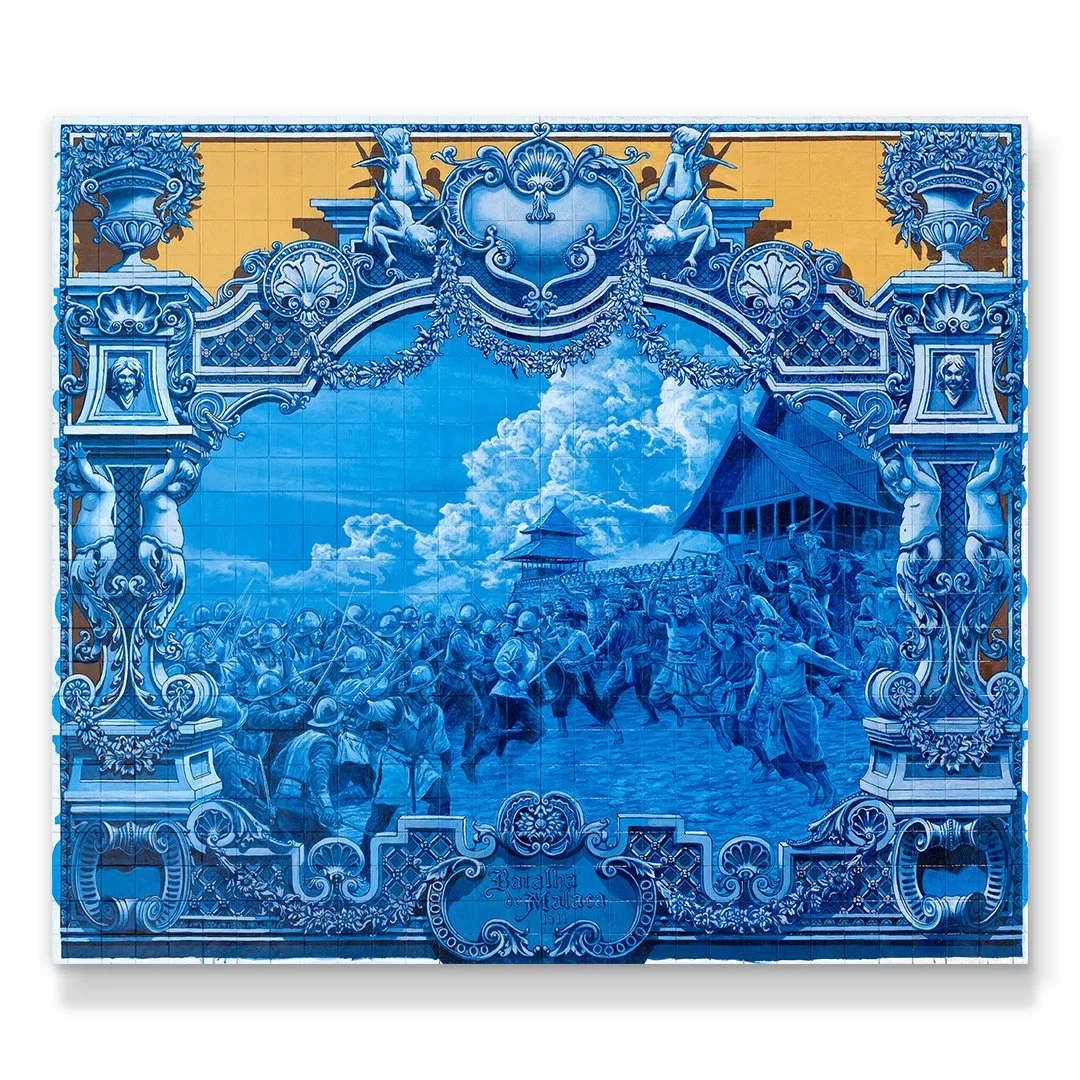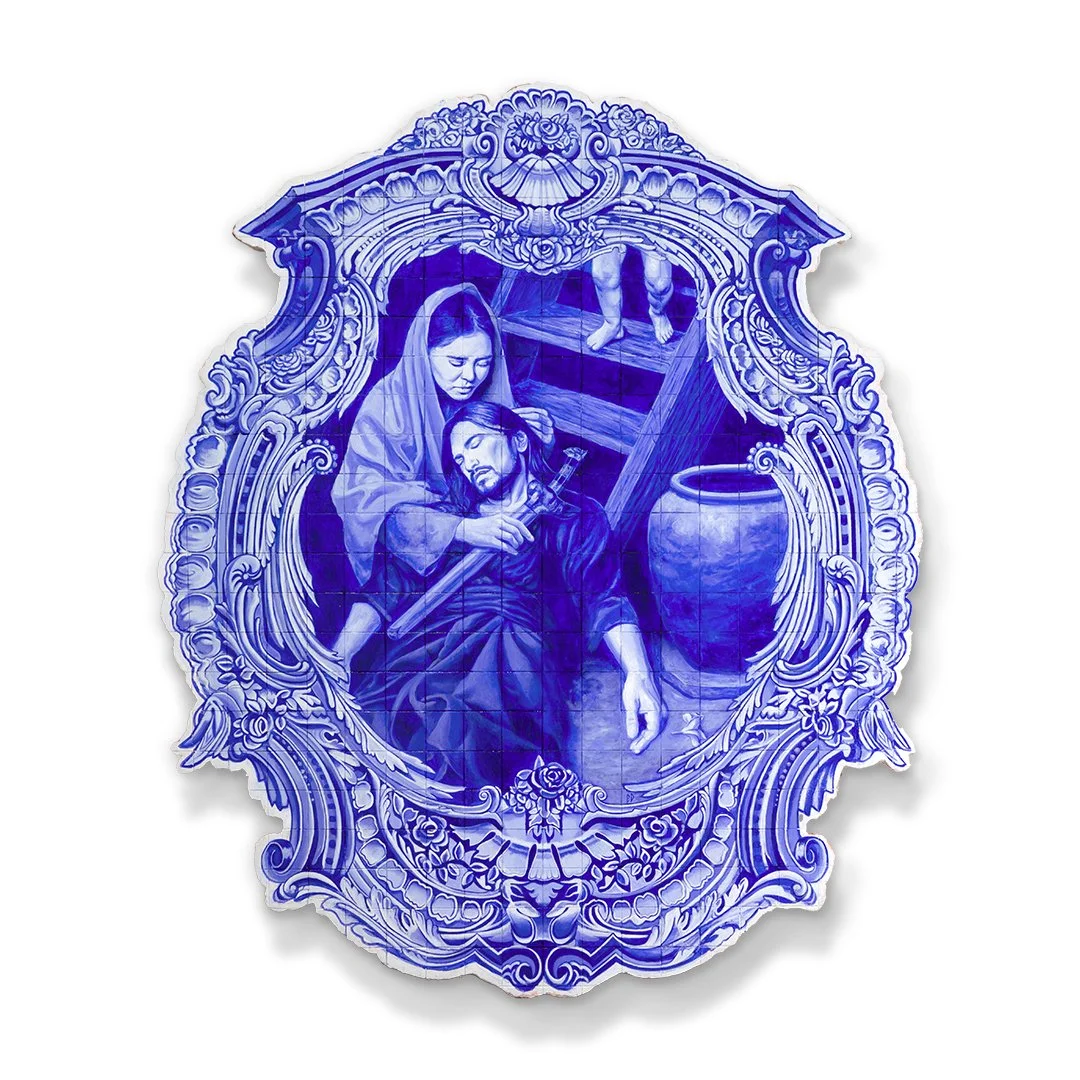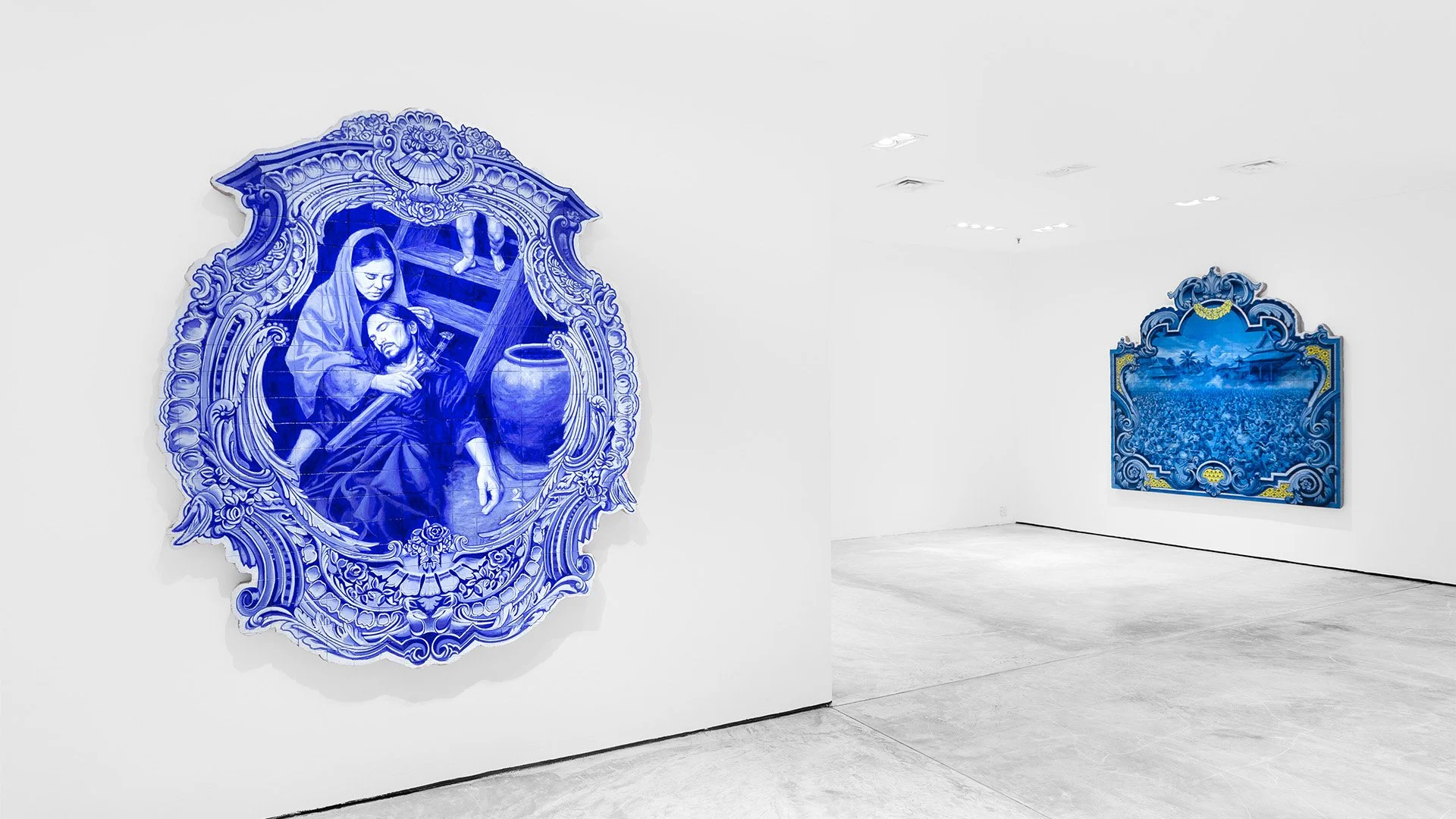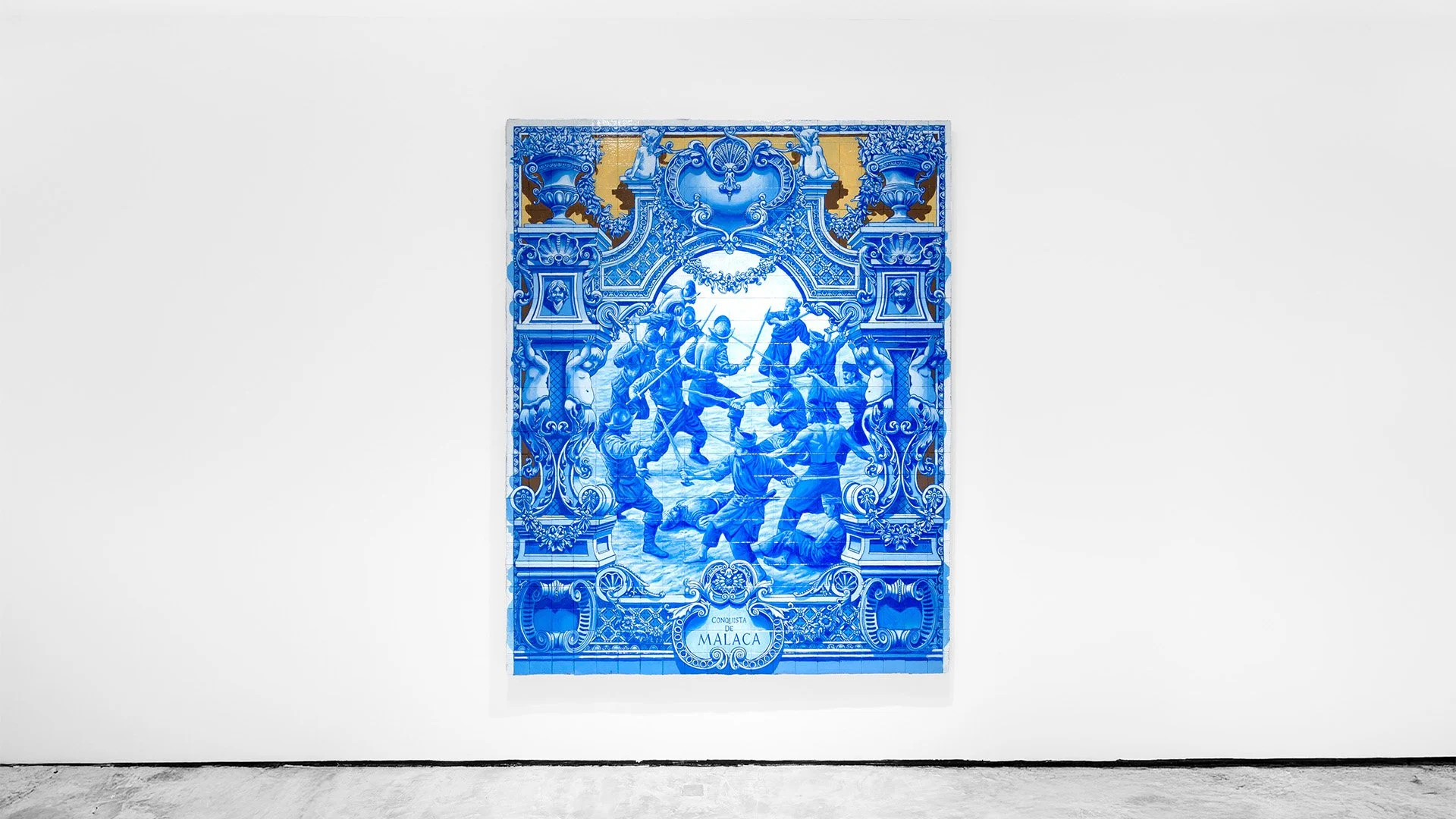Satu Lima Satu Satu
a solo exhibition by Edroger Rosili
-

1511
Pulp clay, polyvinyl acetate, gypsum,
acrylic resin, acrylic paint, wood panel
176cm x 242.5cm (diptych) | 2025 -

1511
Pulp clay, polyvinyl acetate, gypsum,
acrylic resin, acrylic paint, wood panel
191cm x 152.5cm | 2025 -

1511
Pulp clay, polyvinyl acetate, gypsum,
acrylic resin, acrylic paint, wood panel
191cm x 222cm (diptych) | 2025 -

1511
Pulp clay, polyvinyl acetate, gypsum,
acrylic resin, acrylic paint, wood panel
191cm x 221cm (diptych) | 2025 -

1511
Pulp clay, polyvinyl acetate, gypsum,
acrylic resin, acrylic paint, wood panel
183cm x 183cm | 2024 -

1511
Pulp clay, polyvinyl acetate, gypsum,
acrylic resin, acrylic paint, wood panel
178cm x 144cm | 2024
In his latest solo exhibition, Edroger Rosili (b. 1985, Sarawak) brings us back in time through 10 new works – specifically his imagination of that fateful day in 1511 when the Portuguese armada descended upon Melaka. However, this exhibition’s main focus is not on the scholarship of the fall of Melaka which foregrounded the Malay Peninsula as a theatre of war between various colonial forces. Instead, Edroger is inviting us to imagine other possibilities – at least visually – of that fateful day.
We are of course, familiar with this watershed moment from our history textbooks. Triggered by the 500th anniversary of the fall of Melaka in 2011, Edroger’s latest solo exhibition has been a long journey – a quest that has led him through numerous accounts of the event. And upon entering the exhibition gallery, museum-goers would not feel out of place viewing the 10 works.
Most of the images produced by Edroger hark back to the grand European tradition of classical paintings – scenes of battlefields whether on land or at sea. These detailed images produced on the Azulejo or ‘Portuguese ceramic tiles’ instantaneously pull viewers into their compositions. Meticulously-composed, we start to notice certain ‘historical oddities’ when we begin to view the works up-close: the soldiers on the opposing fronts, the weapons used, and the shift of emphasis on certain characters and architectural motifs – all these elements start to reframe our understanding of the turn of events in 1511. And therein lies Edroger’s provocation to re-imagine what the people of Melaka must have thought on that fateful day.














